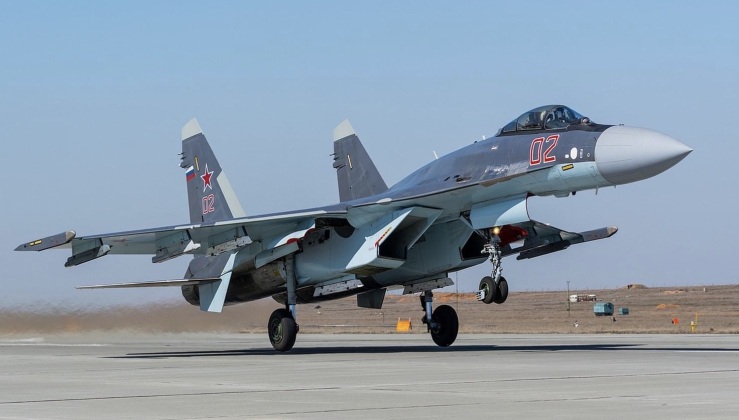News
Was Russia’s Su-35 Fighter a Dud? Ten Years After Entering Service the ‘Super Flanker’ Fell Far Short of its Predecessor
The Russian Air Force brought its first Su-35S fighter regiment into service in February 2014, with the aircraft having remained in serial production on a considerable scale since averaging more than 14 airframes per year. The Su-35 is a ‘4++ generation’ heavyweight and represents an enhanced derivative of the Soviet Su-27 Flanker fourth generation fighter, which when it entered service 30 years prior in 1984 was generally considered the most capable in the world in terms of air to air performance in its time. The Su-27 repeatedly proved capable of surpassing the U.S. Air Force’s top fighter the F-15 by a considerable margin during multiple simulated engagements, most of which were held in the United States and many of which saw both aircraft flown by American pilots. The Soviet Air Force was set to sustain and expand on this advantage by bringing heavily enhanced variants of the Su-27 into service in the 1990s, including the Su-27M and Su-37 with thrust vectoring engines and electronically scanned array radars which, when the aircraft were ready for serial production that decade, were features no Western fighter had. This would then lead on to the MiG 1.42 fifth generation fighter entering service in the early 2000s, which promised to provide superiority over its American counterpart the F-22 to a similar extent than the Su-27 had over the F-15.

The disintegration of the Soviet Union meant although development of enhanced Su-27 variants was practically complete, the aircraft did not enter service and their technologies were used only to develop new export models primarily for the air forces of India and Algeria. An enhanced Su-27 variant optimised for air to air combat thus only entered service in 2014 around 20 years behind when the Soviet Union had been set to achieve this. A major shortcoming of the Su-35 was that its technologies did not appear to be 20 years ahead of the Su-27M and Su-37, with its radar and avionics in particular being only slightly more advanced while its flight performance was highly similar. This reflected the fact that while in the 1990s Russian industry still had momentum from the Soviet era, when the country had had the world’s second largest economy and a world leading tech sector and industrial base, progress was far slower in the post-Soviet years. This meant that the Su-35 was a far less remarkable aircraft in the 2010s than the Su-27 was in the 1980s, the Su-27M and Su-37 in the 1990s, or even to a lesser extent the Su-30MKI developed for India which entered service in 2002. Where all of these were the most capable aircraft in their times, the Su-35 was not considered a serious contender for this title in 2014.

Although being far from world leading, the Su-35 still represented a significant improvement for the Russian Air Force which had otherwise made very few acquisitions in the 20 years after the USSR disintegrated. This included lower maintenance needs and operational costs, a significant reduction in frontal radar cross section for limited stealth capabilities, and an electronically scanned array radar, the Irbis-E. It also boasted a far superior flight performance at all speeds, the ability to cruise supersonically without using afterburners, and a much extended range. Primary factors in its favour include the very significant superiority the Su-27 had over rival Cold War era fighters which the new aircraft could build on, as well as the serious issues the United States has had developing fifth generation fighters, with its F-35 still suffering from approximately 800 performance defects and considered far from ready for high intensity air to air operations.
The American F-22 has fared even worse, with the aircraft set to begin being retired from service several decades ahead of schedule after 75 percent of planned production was cancelled due to their wide ranging performance issues. The F-15EX, a heavily enhanced variant of the Su-27’s closest Western rival the F-15, although boasting much more advanced sensors, avionics and weapons than the Su-35, has been produced very slowly with only four delivered to the Air Force so far. Thus the Su-35’s disadvantage is far less underwhelming that it otherwise could have been, with Russia’s post-Soviet defence sector decline not occurring in isolation as progress in American fighter aviation also stalled considerably, albeit to a much less extreme extent. The program has at a low development and production cost delivered a fighter which could circumvent the otherwise impeding possibility of Russia’s fleet being left obsolete, although still falling far short of restoring the advantage the Soviet Union had enjoyed in the 1980s.












